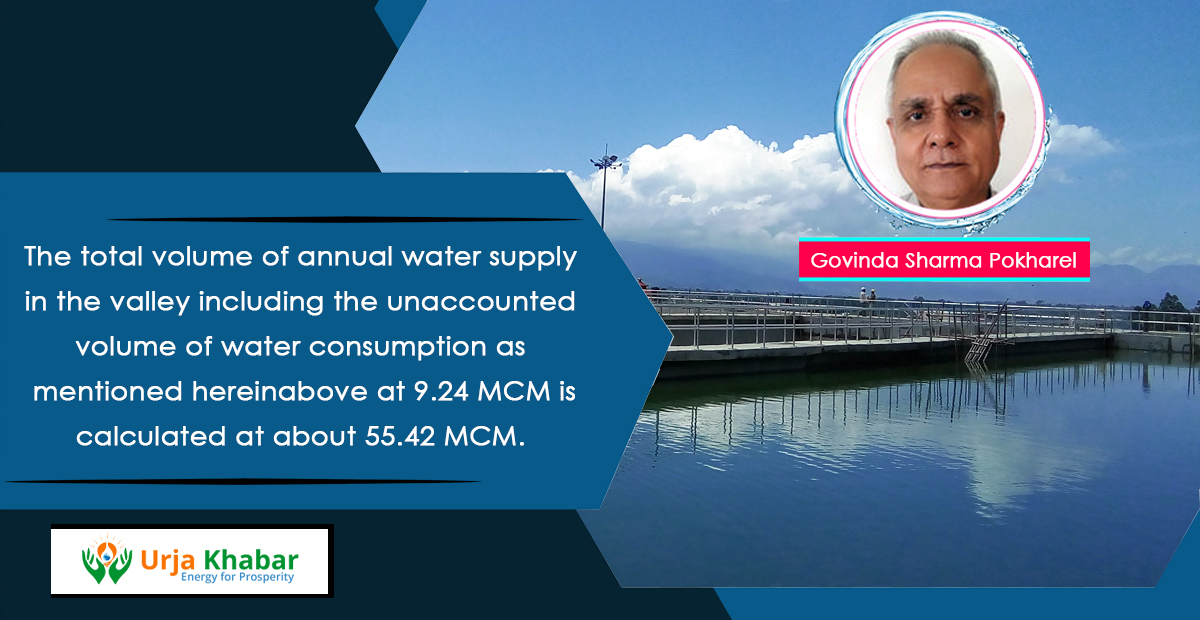
Background
Kathmandu valley, especially the city of Kathmandu used to be self-sufficient in water though the supply used to be limited to a few hours in the morning and little less in the evening. But the situation is worsening since the last 50 years. The degradation of supply both in quantity as well as in quality of water in Kathmandu valley is related to a number of independent variables such as increase in population due mainly to concentration of all facilities in the city of Kathmandu with practically nothing outside the valley, change in political system with limited electoral rights during the Panchayat Raj to greater rights with increasing corruption during the improved Panchayat Raj to Westminster system phase one called the Democratic era and its phase two called Loktantra, or a peoples’ republic. 10 year long Maoist insurgency compelled people to live sufficiently close to the capital or to the district headquarters with better security from both the Maoists and the Government Soldiers. As a result, the total population of the valley shot up to a total of about 50 million with practically no infrastructure required for such a large city. So is the water deficit in Kathmandu valley. The people of the valley, therefore, have to depend upon water jars for drinking and cooking water and water tankers for all other household water need.

As all Nepalese Rivers originating within Nepal, Bagmati the main river of Kathmandu valley together with its numerous tributaries is a rain fed system during the four monsoon months (approximately 100 days) between June and September followed by the dry lean period when the rivers are mostly fed by ground water replenished by the earlier monsoon rain. Therefore, the whole of the river flow of Kathmandu valley can be considered as 100% rain-fed. Therefore, the water resources of the valley of Kathmandu are rain fed in their totality.
Water Balance

The mean annual precipitation as measured by seven meteorological stations in and around the valley of Kathmandu is 1,830.93 mm (Pokharel, 2023), 80 percent of which precipitates in the monsoon. The mountain sides of the valley estimated to comprise about 65% of the total area of the valley receive an annual average of 2080.08 mm rain whereas the same on the valley floor receive an average of 1,368.22 mm. On this basis, the mean annual monsoon and the mean lean season precipitation of the whole of the valley is calculated as 1,464.74 mm and 366.17mm respectively. This means that the total volume of rain water available in Kathmandu valley in the monsoon 100 days is 974.05 million cubic meter (MCM); a total of 719.27 MCM of rain water is available in the hills and mountains around the valley and the volume of such rain water in the valley floor is 254.76 MCM.
But a significant part of the rain water is consumed in Evapotranspiration (ET), Soil moisture increase (SM) and on ground water replenishment (GW), the actual measurement of which is complicated. Some of the water is being supplied by the KUKL for household water use and some other unaccounted volume of water is being used outside the scope of KUKL. Therefore, an indirect method based on the principle of mass balance is applied as under:
Sout = Sin - Sconsumption
Where,
Sout is the quantity of water flowing out of the closed system (flow out of Chovar),
Sin is the quantity of inflow into the closed system,
In the above equation, Sin is equal to 974.05 MCM for the monsoon, Sout can be obtained from the mean monsoon flow of Chovar hydrological station as shared in public media is 385.69 MCM. Therefore, the total volume of water consumed in ET, SM, GW and other household as well as sanitary consumption in Kathmandu valley is 588.36 MCM, which is 60.41 percent of the total monsoon rain of Kathmandu valley. Such a high volume of water consumption is due to the fact that such consumption also accounts for water consumption in agriculture.
Therefore, Sconsumption = 588.36 MCM. But, this volume of water includes water consumption on ET, SM, GW, total volume of water supplied by KUKL in the monsoon and also the unaccounted volume of water used in the valley in the monsoon (OC). Therefore, Sconsumption in the above equation should be understood as: Sconsumption = SET + SSM+ SGW+ SKUKL+ SOC
The mean household and sanitary consumption of water in the monsoon SKUKL as per the KUKL publication is 46.18 MCM. Similarly, SOC taken as 20% of SKUKL is calculated to be 9.24 MCM. The total volume of replenishable GW recharge considered to be taking place in the monsoon is calculated as a total sum of the lean season (October to May) flow of Bagmati at Chovar (99.48 MCM) and total annual ground water extraction by KUKL (15.19 MCM) minus rain water contribution of lean season taken as 20% of the total volume of rain water of the lean season (48.70 MCM),
Therefore, SGW = 99.48+15.19-48.70=65.97 MCM,
Now substituting the values of Sconsumption, SGW, SKUKL, in above equation, it is obtained that
588.36 MCM = 65.97 MCM + 15.19 MCM + 3.59 MCM + SET + SSM
Therefore, the total value of SET + SSM=503.61 MCM, which is 51.70 percent of the total volume of monsoon rain water in the valley of Kathmandu. Therefore, the monsoon water balance of Kathmandu valley is summarized as under:
Total inflow of water = 974.05 MCM
Total out flow of water from Chovar = 385.69 MCM
Total Loss and Consumption = 588.36 MCM that includes the following losses and consumptions
Loss on ET and SM during the monsoon = 503.61 MCM
Used in GW recharge during the monsoon = 65.97 MCM
Household and other Consumption during the whole of the year = 18.78 MCM
Similarly, the annual water balance of Kathmandu valley is as under:
Total inflow of water = 1,217.57 MCM
Total out flow of water from Chovar = 493.71 MCM
Total Loss and Consumption = 723.86 MCM that comprises 59.43% of the total annual rain water availability of the valley.
Conclusion
These figures of water availability and loses show that Kathmandu valley is a water surplus valley and that there is plenty of room for water management. Similarly, the KUKL figures show that KUKL has been able to supply a meagre volume of 46.18 MCM of water annually depending heavily on ground water resources while the surface water resources have not been properly tapped and managed. The total volume of annual water supply in the valley including the unaccounted volume of water consumption as mentioned hereinabove at 9.24 MCM is calculated at about 55.42 MCM.
But the present estimated water demand for the whole of the valley as calculated stands at about 321.20 MCM; therefore the total annual deficit of water supply is approximately 265.78 MCM. The total estimated volume of water diverted through the Melamchi water supply project including Yangri and Larke rivers stands at 510MLD or 186.15 MCM. This leaves the Kathmandu valley with a net deficit of 79.63 MCM, which needs to be managed from the monsoon rainfall. It means, managing about 16% of the total annual outflow or 6.54 percent of the total annual inflow of the Bagmati River or 8.17% of the total monsoon water availability.
As most of the rainwater is available in the hills and the mountains around the periphery of the valley, it seems manageable through construction and management of small ponds and lakes around the periphery of the valley as the topography permits without much increasing the risk to flooding the valley; but such possibility needs to be studied at least at the feasibility level so that the municipalities of the valley can take up the projects as and when they are felt necessary by the particular municipality.
Pokharel is associated with Nepal Water Conservation Foundation (NWCF)
